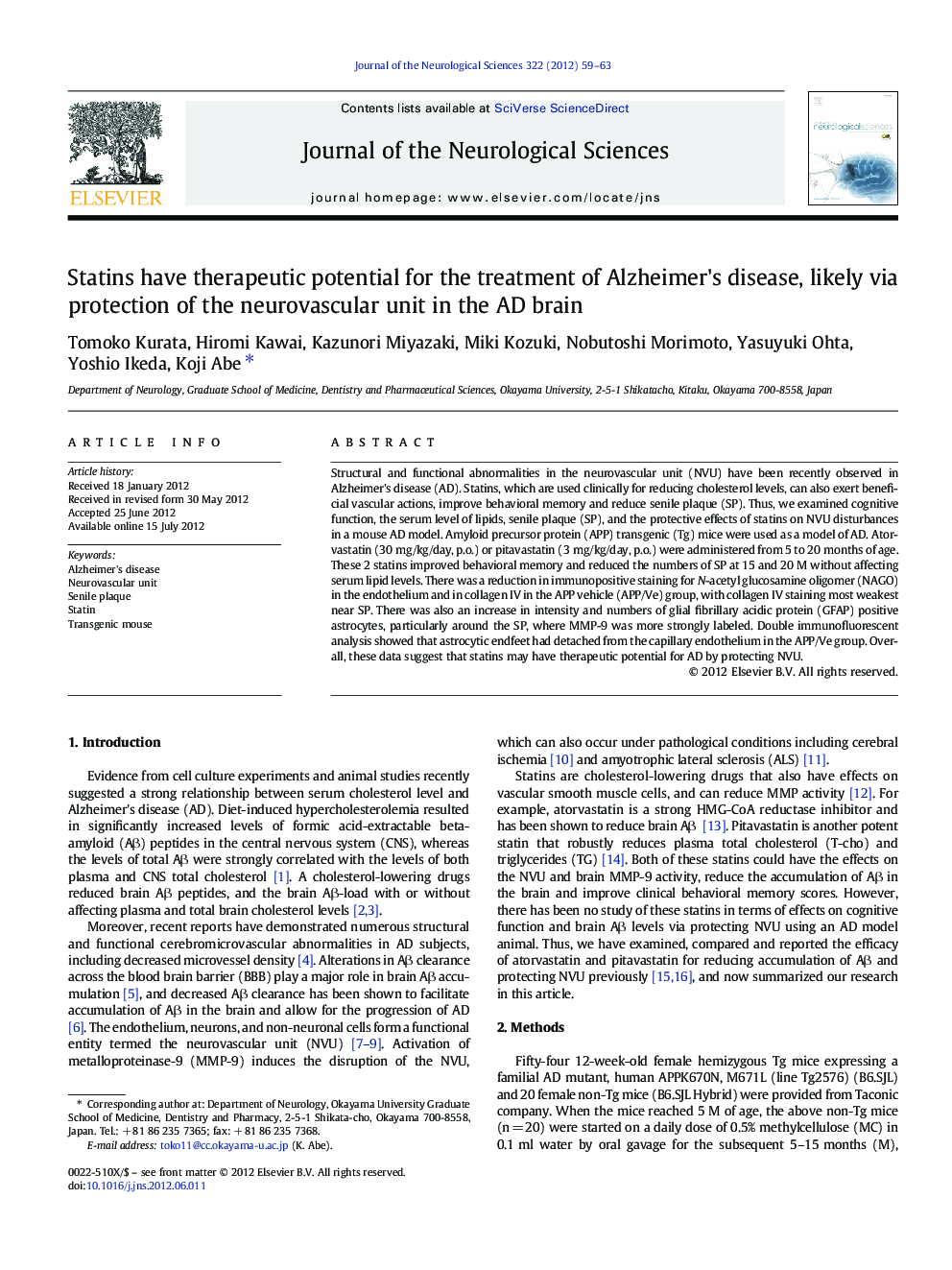| Article ID | Journal | Published Year | Pages | File Type |
|---|---|---|---|---|
| 8279953 | Journal of the Neurological Sciences | 2012 | 5 Pages |
Abstract
Structural and functional abnormalities in the neurovascular unit (NVU) have been recently observed in Alzheimer's disease (AD). Statins, which are used clinically for reducing cholesterol levels, can also exert beneficial vascular actions, improve behavioral memory and reduce senile plaque (SP). Thus, we examined cognitive function, the serum level of lipids, senile plaque (SP), and the protective effects of statins on NVU disturbances in a mouse AD model. Amyloid precursor protein (APP) transgenic (Tg) mice were used as a model of AD. Atorvastatin (30Â mg/kg/day, p.o.) or pitavastatin (3Â mg/kg/day, p.o.) were administered from 5 to 20Â months of age. These 2 statins improved behavioral memory and reduced the numbers of SP at 15 and 20Â M without affecting serum lipid levels. There was a reduction in immunopositive staining for N-acetyl glucosamine oligomer (NAGO) in the endothelium and in collagen IV in the APP vehicle (APP/Ve) group, with collagen IV staining most weakest near SP. There was also an increase in intensity and numbers of glial fibrillary acidic protein (GFAP) positive astrocytes, particularly around the SP, where MMP-9 was more strongly labeled. Double immunofluorescent analysis showed that astrocytic endfeet had detached from the capillary endothelium in the APP/Ve group. Overall, these data suggest that statins may have therapeutic potential for AD by protecting NVU.
Related Topics
Life Sciences
Biochemistry, Genetics and Molecular Biology
Ageing
Authors
Tomoko Kurata, Hiromi Kawai, Kazunori Miyazaki, Miki Kozuki, Nobutoshi Morimoto, Yasuyuki Ohta, Yoshio Ikeda, Koji Abe,
